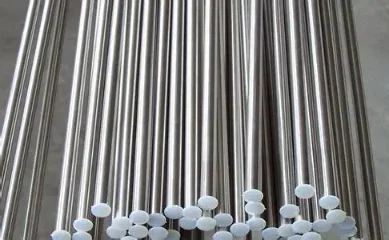
High heat eats ordinary metals for breakfast. In furnaces, reformers, and exhaust systems, temperatures swing, scale forms, and creep sneaks up on parts that once looked bulletproof. If you specify materials for these jobs, you want stable strength, resistance to oxidation, and welds that hold up after hundreds of heat cycles. That’s where 310S stainless steel bars earn their keep.
Before diving in, a quick note for sourcing teams. If you need a responsive supplier with technical depth, take a look at Qingdao Sunrise New Material Co., Ltd.. The company publishes clear product specs, responds quickly through the Contact channel, and keeps an export-ready product catalog with mill test documentation. The tone is practical, not hype-heavy, and the team can discuss tolerances, surface finish, and cutting on the first call. It’s a straightforward way to move from drawings to material in a predictable window.
What 310S Stainless Steel Actually Is?
310S is an austenitic stainless steel designed for service where heat and oxidation are part of daily life. You get a high-chromium, high-nickel balance with lower carbon than standard 310, which helps the material resist sensitization at welds during long, hot duty cycles. In plain terms: the alloy keeps its shape and surface better when temperatures soar.
Composition and Microstructure Basics
Typical chemistry lands in the ballpark of chromium 24–26% and nickel 19–22%, with carbon not exceeding 0.08%. That composition supports a stable austenitic structure at elevated temperatures and limits carbide precipitation at the grain boundaries when you weld or cycle the part through heat. The result is good ductility at temperature and less risk of premature cracking in the heat-affected zone.
Core Property Set You Actually Use
- Heat resistance: Common guidance cites service in air up to roughly 1100–1149°C depending on the duty (continuous vs. intermittent) and the atmosphere.
- Oxidation behavior: The alloy forms a tenacious scale; resists spalling during thermal cycling better than many 3xx grades.
- Strength and ductility: Tensile strength on bar stock is typically in the 500 MPa class with healthy elongation; that ductility matters when fixtures see thermal shock.
If your spec also touches reducing sulfur gases, note that service limits drop; some data sets reference lower temperature caps when sulfur content in the atmosphere climbs.
Why 310S Excels in High-Temperature Conditions?
There are two recurring headaches in hot zones: scale that won’t stay put, and creep that bends components out of spec over time. 310S mitigates both, which is why it shows up in furnace hardware and high-heat manifolds.
Oxidation and Creep Behavior That Buys You Time
High chromium builds a dense oxide layer that slows oxygen ingress. Add substantial nickel and you get a matrix that keeps its toughness when things heat up, so fixtures don’t turn brittle in normal service. Multiple references place oxidation resistance near the 1100°C mark in air; creep strength remains competitive across long exposures compared to common shop grades like 304.
Thermal Cycling Without Constant Rework
Where many materials look fine on day one but flake or warp after a month of starts and stops, 310S holds scale better through cyclic heating. Performance in intermittent service up to roughly 1035–1050°C is widely cited, which is why it appears in baskets, hangers, and tube supports that live through reheats every shift.
If you are shortlisting high temperature stainless steel options, make sure your duty cycle and atmosphere match published limits, not just a single peak number.
310S vs Other Common Grades?
It’s tempting to substitute a familiar grade and call it a day. In hot service, that choice often bites later. A simple comparison helps you avoid rework.
Where 310S Fits in a Shortlist
- Compared to 304: 304 is versatile and cost-friendly, but its heat ceiling is lower. Above the mid-900s °C, scale growth and loss of strength become problematic.
- Compared to 316: 316 shines in chloride environments. At high heat in air, it still trails 310S on oxidation resistance and service temperature.
- Compared to 310: Standard 310 carries more carbon. That adds hot strength but raises the risk of carbide formation at welds. 310S trims carbon to improve weldability and reduce sensitization while keeping the high-heat profile.
If your design includes welded frames or repeated thermal cycles, the lower-carbon variant is often the safer call.
Typical Industrial Applications?
You see 310S where airflow, flame, or hot product push temperatures into four digits. A quick tour of use cases shows why the material keeps getting specified.
Heat Processing and Power Equipment
Retorts, radiant tubes, heat-treat baskets, and superheater supports often move to 310S when operators need longer intervals between rebuilds. Power generation hardware facing oxidizing flue streams uses the alloy for supports and baffles that can survive peak temperatures without sag.
Petrochemical and Refining Duty
Burner tips, reformer sections, and hot manifolds see oxidation plus some carburizing tendencies. 310/310S grades are frequently listed for these zones because they resist scale and retain shape across long cycles, provided the atmosphere is controlled.
For engineers mapping the applications of 310S stainless bar to plant assets, note how weld locations and supports align with hot spots. That is often where upgrades deliver the biggest payback.

Welding and Fabrication Considerations?
Designs only work if joints hold. The lower carbon content of 310S helps here, but technique still matters.
Joint Planning and Filler Choices
Gas tungsten arc and shielded metal arc processes are common. Matching fillers labeled for 310/310S maintain chemistry and keep the heat-affected zone consistent. Control cooling to reduce residual stress; that habit pays off when fixtures see fast heat-up on Monday mornings.
Machining and Forming
Expect work hardening. Use sharp tooling, slower speeds, and adequate coolant. Forming at moderate temperatures reduces cracking risk in tight bends. It’s not difficult, just less forgiving than mild steels and most ferritics.
If the part will live near the top of its temperature window, some operators specify a post-weld heat treatment to stabilize the structure. Published data sets describe solution anneal windows around 1040–1065°C with water quench for plate and bar products.
Maintenance and Lifecycle Performance?
Hot metal doesn’t get a free pass. Light maintenance keeps fixtures on spec and extends service life.
What Shops Actually Do
- Inspect surfaces each season for excessive scale or hot spots.
- Clean with approved alkaline solutions; use controlled pickling if heavy scale must come off before returning to service.
- Track straightness and creep; a simple jig check on baskets or rails catches drift early.
Longevity varies with atmosphere, but many operations report materially longer life against 304 and 316 in the same hot zones. Several technical notes also flag sulfur-bearing atmospheres as a factor that reduces the safe ceiling. Keep that in mind if burners see fuel shifts.
How to Procure the Right 310S Bar for Your Project?
A clean purchase spec cuts delays. Vendors move faster when key variables are fixed up front.
What to Put in the RFQ
- Diameter and tolerance window
- Finish (black, bright, peeled) and length (6 m, 12 m, or cut-to-length)
- Delivery condition (hot rolled, cold drawn, annealed)
- Test documents (EN 10204 3.1), chemistry, tensile data
- Target service temperature and atmosphere, especially sulfur content
- Weld plan, if frames or supports are fabricated from the bar
This is also a good place to mention if you need coordinated parts like plate or tube in the same grade for a matched assembly. Several suppliers keep multi-product inventories across 3xx families.
When your shortlist needs the best stainless steel for furnace parts, align the spec with duty: continuous vs. intermittent service, oxidizing vs. carburizing vs. sulfur-bearing, and any thermal cycling profile.
What to Expect From a Reliable Supplier?
Strong partners do three things well: keep stock moving, document what they ship, and speak materials fluently. Look for clear product pages, quick routes to sales engineers, and contact channels that don’t vanish after the PO. Suppliers that publish plate, pipe, bar, and coil across multiple grades tend to have the testing infrastructure to back claims with data sheets and mill certs.
If your calendar is tight, ask about pack options, cut plans, and export crating early. Small details, big schedule wins.
FAQ
Q1: What Is the Practical Maximum Service Temperature for 310S Bars?
A: In dry air, published guidance places continuous service around 1100°C, with intermittent service notes near 1035–1050°C. Atmospheres with sulfur or heavy carburization reduce those numbers, so match the grade to the real gas stream.
Q2: How Does 310S Differ From Standard 310 in Hot Service?
A: 310S uses lower carbon, which improves weldability and reduces sensitization at the heat-affected zone. You keep the high-heat profile while gaining safer behavior at welded joints, especially in cyclic duty.
Q3: Where Do Plants Commonly Use This Grade?
A: Furnace fixtures, radiant tubes, heat-treat baskets, burner tips, and hot manifolds are typical. Power and process operators value oxidation resistance and creep behavior across long cycles.
Q4: What Welding Practices Work Best With 310S Bars?
A: GTAW and SMAW are common with matching 310/310S fillers. Manage heat input and cooling to limit residual stress, and consider a stabilization heat step for parts that live at the top of the temperature window.
Q5: How Should an RFQ Be Framed for Faster Quotes and Fewer Revisions?
A: List diameter and tolerance, finish and length, delivery condition, required certs, and the duty profile. Include the target atmosphere and any weld plans. Vendors can then match bar stock and processing without guesswork.






